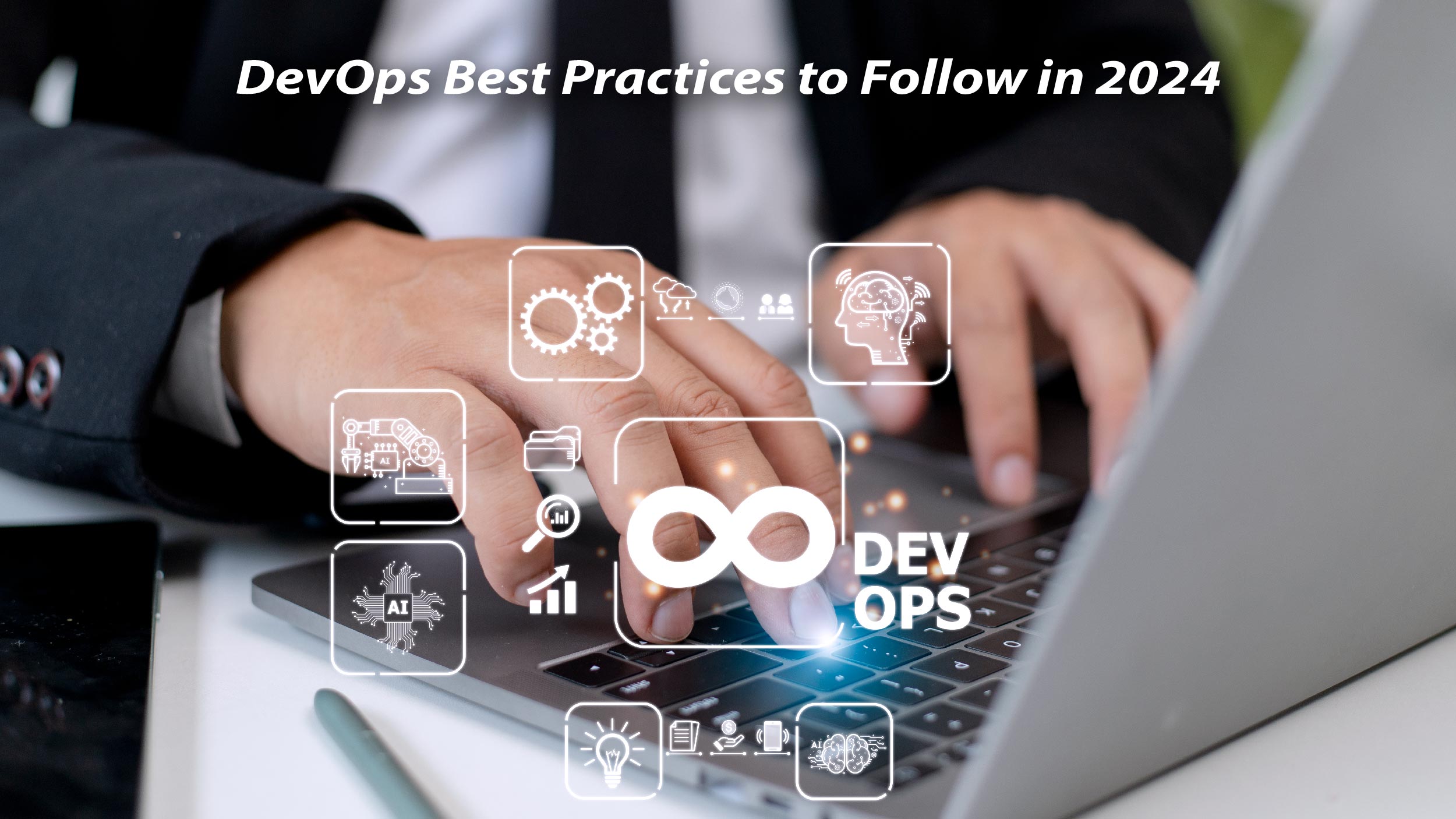In the software industry over the last decade, there has been a significant focus on leveraging DevOps best practices to enhance speed and value creation. We have wholeheartedly adopted these methodologies, which have transformed our approach to development, operations, project management, code quality, observability, and continuous feedback.
As these practices have become more widespread, various counterproductive patterns have surfaced. This article delves into the positive aspects of DevOps, outlining best practices and workflow enhancements. Let’s dig in!
What is DevOps?
DevOps is garnering significant attention. The term itself is an amalgamation of “Dev” (short for software development) and “Ops” (short for software operation). DevOps encompasses a wide range of elements within a software framework, including source code, configuration, design, data, testing, deployment, planning, staging, and more.
Cloud DevOps best practices continue to evolve, emphasizing scalability, flexibility, and optimized resource management for enhanced performance in cloud environments.
Why is DevOps Important?

DevOps transformation necessitates a thorough reconsideration of corporate frameworks and procedures, but it proves to be a worthwhile investment. According to the 2020 DevOps Trends survey, a remarkable 99% of respondents affirmed that DevOps has had a favorable impact on their organization.
According to the State of DevOps 2019 report by DORA, it was found that high-performing teams have a release frequency 208 times higher and are 106 times faster compared to low-performing teams. DevOps not only enhances speed but also improves quality, as exceptional teams have a change failure rate seven times lower than low-performing teams.
Also Read : 5 Best Mobile App Monetization Techniques You Should Know in 2024
● Achieve Faster Time to Market
Implementing DevOps accelerates software product launches and updates, fostering swift collaboration between development and operations teams for immediate feedback and adjustments.
● Increased Automation Efficiency
DevOps teams automate key processes, expediting the development cycle and freeing developers from manual, time-consuming tasks, enabling a sharper focus on new projects.
● Adaptability to Business Needs
DevOps empowers developers to handle testing, deployment, and maintenance, ensuring rapid response to market demands and business requirements, and facilitating real-time customer service and prompt updates.
● Improved Team Collaboration
DevOps teams coordinate various working groups, fostering collaboration that brings forth new ideas and perspectives, ultimately creating a more harmonious working environment for all involved.
After knowing the basics about DevOps, you must be wondering, what are DevOps best practices? Let’s shed some light on these practices.
DevOps Best Practices to Follow in 2024

In 2024, adopting best DevOps practices remains paramount for efficient and secure software development and deployment. Leveraging Azure DevOps best practices ensures streamlined collaboration and automation throughout the development lifecycle.
DevOps security best practices play a crucial role in safeguarding applications and infrastructure, emphasizing the importance of integrating security measures seamlessly into the DevOps pipeline.
Listed below are some of the best practices of DevOps to consider in 2024.
1. Agile Software Development
Agile is a software development and project management approach that prioritizes delivering value quickly through customer feedback. It involves incremental progress, continuous evaluation of processes, and responsiveness to changes. DevOps, on the other hand, emphasizes swift, reliable code delivery through cross-team collaboration and automation. Combining Agile with DevOps aims to achieve faster release cycles and enhanced reliability for end users.
2. Continuous Integration (CI)
Continuous integration involves regularly merging source code into a central repository, followed by automated builds and tests to ensure code quality. The objective is to detect and address bugs early, enhance code quality, and optimize deployment efficiency. Improving the process leads to increased frequency, preventing major issues in production and reducing technical debt over time.
3. Continuous Delivery (CD)
Continuous delivery (CD) is one of the major DevOps best practices every business should follow. It streamlines the software deployment process, encompassing build, validation, version control, and deployment. It involves short development cycles where code changes are automatically built, tested, and released into production. In a well-implemented continuous delivery system, developers work with deployment-ready builds that have passed standard tests. This approach automates both testing and release processes, reducing manual effort, streamlining production deployment, and minimizing failures through rigorous testing at every step.
4. Microservices
Microservices architecture involves a distributed application where multiple services perform specific functions. Each service in this pattern can be independently deployed, operates its own processes, and communicates through a web interface. Notably, services may use different languages or frameworks, deploying either individually or as a group.
What sets microservices apart is their dual nature—open for extension via exposed interfaces yet closed for modification, allowing independent implementation and versioning. This architecture minimizes the impact of failures by isolating services and facilitates scalability by easily adding new microservices without disrupting the overall application.
5. Infrastructure as Code
Infrastructure as code (IaC) is the practice of coding to provision and manage a service’s infrastructure, utilizing software development techniques like version control, making it one of the key DevOps best practices. It enables teams to programmatically interact with infrastructure, allowing for swift deployment and updates using standardized patterns. Treating infrastructure as code in DevOps facilitates early application testing in a production-like environment, ensuring validation and testing to prevent common deployment issues. IaC not only eliminates manual configuration but also ensures consistency, enabling DevOps teams to rapidly deliver stable environments at scale.
6. Configuration Management
Configuration management automates and standardizes the setup of system resources like virtual machines, servers, and databases. Using tools eliminates manual configuration tasks for system admins, reducing the risk of errors. Coupled with infrastructure as code, it allows teams to operate complex environments at scale by templating system definitions and configurations.
7. Version Control
Version control is crucial in software development, enabling the tracking of code changes and facilitating collaboration among developers. Typically implemented using Git, this practice ensures that code changes are only merged into the master branch after approval, simplifying conflict resolution and rollback procedures in DevOps practices like continuous integration and infrastructure as code.
8. Continuous Monitoring
Among other DevOps best practices is continuous monitoring, providing full visibility into the health and performance of the entire application stack. DevOps teams leverage telemetry data, including event data and logs, to identify and address potential issues promptly. Monitoring dashboards and meaningful alerts based on collected metrics enable proactive observation of services in production, facilitating a quick response to performance bottlenecks and improvements for a better end-user experience.
Bottom Line
Embracing DevOps best practices is essential for fostering a culture of collaboration, automation, and continuous improvement in software development and delivery. Whether it’s leveraging tools like Azure DevOps for seamless collaboration, incorporating robust security measures, or optimizing workflows in cloud environments, staying abreast of these practices is crucial for success in the ever-evolving landscape of technology. By adhering to DevOps best practices, organizations can not only enhance efficiency and speed but also fortify their software development processes for the challenges of tomorrow.




